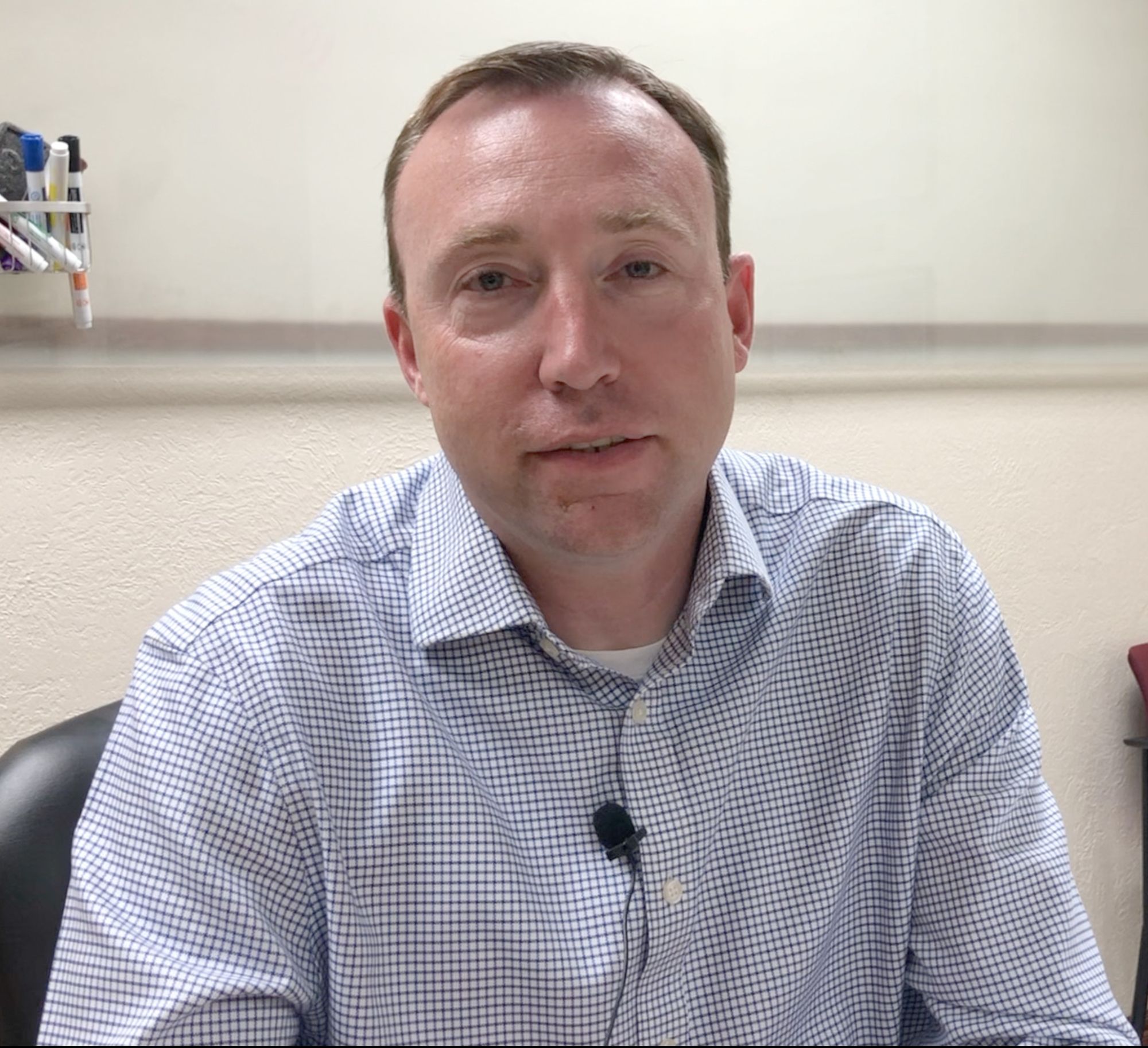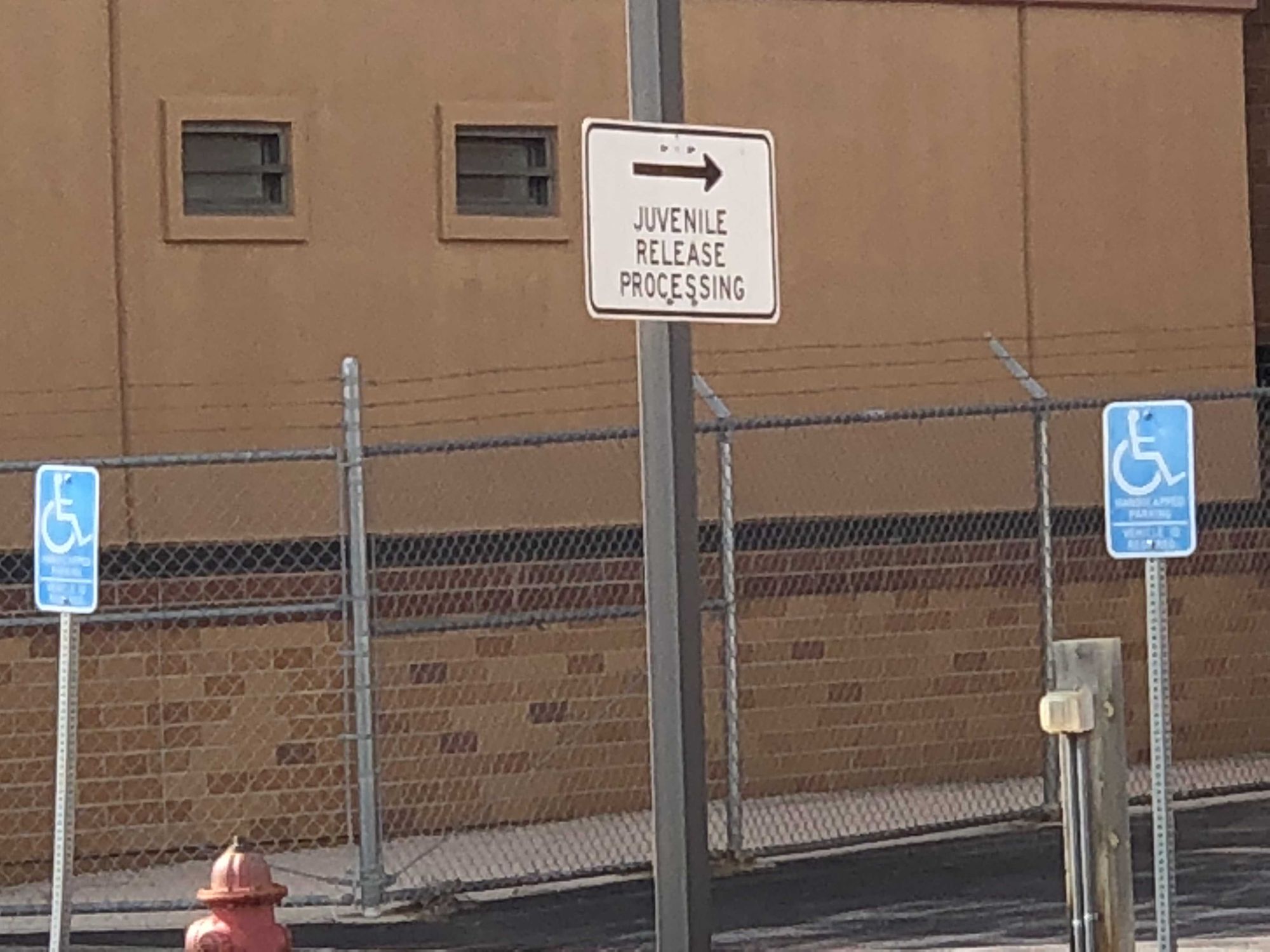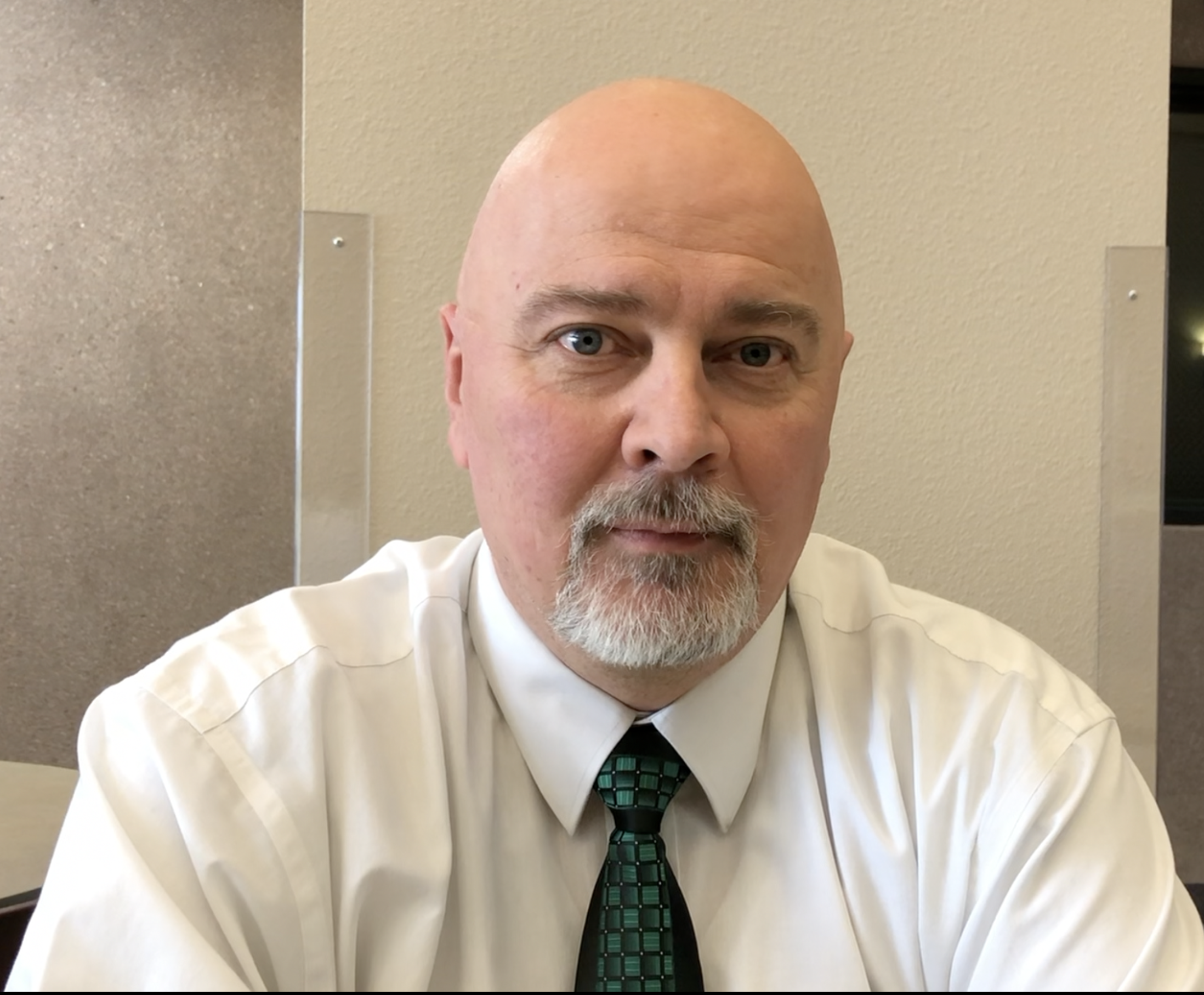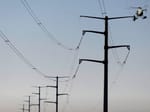Over the past decade, South Dakota saw a significant increase in the number of juveniles arrested for drug crimes, and officials see few signs that the arrests will fall anytime soon despite recent reforms of the state juvenile justice system.
According to state crime data, the number of youths arrested on drug charges such as possession, use and distribution nearly doubled from 579 in 2008 to 1,043 in 2012. Since 2012, the number of juvenile arrests for drug crimes hasn’t fallen below 948. The number peaked at 1,062 in 2015, the same year a set of sweeping new juvenile justice reforms went into effect.
State officials are uncertain whether the upward trend in arrests means that more young people are actually using drugs, if more are being caught due to increased enforcement, or whether the juvenile justice system reforms of 2015 that sought to keep juveniles out of jail has inadvertently led to a higher re-offense rate by some juvenile drug users. The number of juveniles arrested for all other crimes not related to drugs has fallen across the state in recent years.
The rise in juvenile drug arrests comes as the state is already grappling with increased arrest rates of adults on drug charges. The number of adults arrested for drug crimes in South Dakota climbed from 2,778 in 2008 to 9,080 in 2018, an increase of nearly 227%.
Law enforcement and judicial officials have in the past blamed much of the rise in adult arrests on the methamphetamine epidemic and also the proliferation of opioid addiction in South Dakota. While the reasons for the climbing juvenile drug arrests are less clear, the arrest numbers for juveniles and adults are causing concern among state officials that the drug problem in South Dakota needs constant focus.
“Drug crime is something that’s growing in South Dakota, and it’s something we need to pay attention to,” said Tim Bormann, chief of staff to South Dakota Attorney General Jason Ravnsborg.
The high juvenile drug arrest rate gave the state some unflattering national attention earlier this year. In March, 2019, a study conducted by the Greenhouse Treatment Facility in Grand Prairie, Texas, showed that South Dakota had the highest juvenile drug arrest rate in the nation in 2017. According to the study, 1,056 juvenile drug arrests were made that year, a rate of more than 45 juveniles per 10,000 South Dakotans under the age of 18. The Greenhouse study was based on data from the Federal Bureau of Investigation’s 2017 Uniform Crime Report.
By comparison, Wyoming, the state with the second-highest rate of juvenile drug arrests in the study, had 579 such arrests and a rate of about 35 drug arrests per 10,000 juveniles. North Dakota was third in the ranking, with 479 juvenile drug arrests for about 17 arrests per 10,000 juveniles in 2017.
Minnesota, population 5.6 million, reported 1,893 total juvenile drug arrests in 2017 for a rate of about 14 arrests per 10,000 youths. Montana, Iowa and Nebraska all reported fewer juvenile drug arrests than South Dakota and much lower arrest rates.
South Dakota officials, however, say the rate in the Greenhouse study doesn’t tell the whole story.
Greg Sattizahn, chairman of the South Dakota Juvenile Justice Oversight Committee, which monitors the state’s juvenile justice reform efforts, said the Uniform Crime Report isn’t supposed to be used to rank states. Sattizahn said there are too many factors unaccounted for in the data, including that not every jurisdiction in every state reports their statistics to the FBI.

Greg Sattizahn, chair of the South Dakota Juvenile Justice Oversight Committee, provides an overview of what the oversight committee has focused on over the past four years and gives a quick look at the committee’s plans for the future.Play Video
At least some of the increase in juvenile drug arrests might be related to what’s going on with adults, who are being arrested on drug crimes at an alarming rate in South Dakota. “It sure makes sense to me that if you have more drug use at home, you’ll have more kids exposed to it." -- Greg Sattizahn
In 2018, 17 South Dakota jurisdictions failed to report a full year’s worth of data, said Bormann.
Despite concerns over the rankings, state data shows that the number of juveniles arrested for drug offenses has increased dramatically since 2008 and has remained at an elevated level since.
Prior to 2015, South Dakota had one of the highest rates of juvenile incarceration in the country. The statistics was one driving force behind efforts by then-Gov. Dennis Daugaard to sign what was known as the Juvenile Justice Public Safety Improvement Act in March of that year.
The law created or boosted funding for a suite of new services and diversion programs designed to fight addiction and alter behavior instead of locking juveniles up, Sattizahn said. The goal behind many of the reforms is to keep youths out of the justice system altogether, he said.
“If we have too heavy a hand … you can push them further into the criminal justice system,” Sattizahn said.
So far, the reform effort has had some success. The number of youths placed into the custody of the Department of Corrections for the first time fell by 63% between 2014 and 2018, according to the Juvenile Justice Oversight Committee 2018 annual report.
In another sign of success, the number of youths arrested for crimes not related to drugs has declined. In 2012, the state reported 6,617 arrests of juveniles for all crimes other than drug use, possession or distribution. In 2018, South Dakota reported 5,026 non-drug juvenile arrests, a 24% decline over that period.
The state’s law enforcement community is pegging the rise in juvenile drug arrests at least partially on the Juvenile Justice Public Safety Improvement Act, Bormann said. The argument is that because youths who were arrested used to be placed in treatment or a detention center, but are now released into the community, that they have more opportunities to reoffend.
“One of the things you will hear from prosecutors and law enforcement is, it tends to create a lot of repeat offenders,” Bormann said.
Local law enforcement agencies, however, aren’t required to report how many times they arrest the same person for the same crime. As a result, there isn’t a good way for state officials to track the number of repeat arrests.
The sharp rise in South Dakota’s juvenile drug arrest numbers also predates the juvenile justice reforms by more than five years. Bormann said the creation of regional law enforcement task forces, made up of state, federal and local officers, might account for part of the increase in arrests. The first such task force, known as the Northern Plains Safe Trails Task Force, was created by federal officials in 1999.
At least some of the increase in juvenile drug arrests might be related to what’s going on with adults, Sattizahn said, citing the rapid climb in adult drug arrests.
“It sure makes sense to me that if you have more drug use at home, you’ll have more kids exposed to it,” Sattizahn said.
Bormann said there are probably more youths doing drugs, too. But it’s hard to know whether that’s true or not. The biennial anonymous Youth Risk Behavior Survey, one of the nation’s most important tools for tracking substance abuse in teens, did not reach statistical validity in South Dakota in 2017. States administer the voluntary survey on behalf of the federal Centers for Disease Control and Prevention.

The YRBS collects information such as how many youths are doing drugs and what kinds of drugs they are taking. The last YRBS was administered in 2017 but not enough youths and schools participated, so the data gathered wasn’t considered representative of the state population.
Results from the 2007 to 2015 surveys showed the number of youths using marijuana was declining. The number of youths who were using meth fluctuated between about 3% to 5%.
Trends surrounding youths and prescription medication abuse haven’t been studied or reported. Questions about the issue weren’t added to the YRBS until 2011, so officials say there is not enough data to identify trends. But, in 2015, the YRBS estimated that about 13 percent of South Dakota teens had misused prescription drugs.
Nationally, according to the 2017 YRBS, the number of youths doing drugs was falling. Survey results from South Dakota and some other states were included in the CDC 2017 national report, but the percentage of youths who reported taking illegal drugs had fallen from 22.5% in 2007 to about 14% in 2017.
Finding good data on what youths are doing, what treatment programs seem to be working and which programs aren’t working has been a challenge for Sattizahn and the Juvenile Justice Oversight Council.
“We feel like we need that data,” Sattizahn said.

Bormann, who served as Faulk County state’s attorney before he became Ravnsborg’s chief of staff, said he has seen first-hand the challenges the legal system faces when trying to keep youths away from drugs. Reducing drug use in rural areas, in particular, has been a struggle, he said. Treatment centers, counselors, court services and judges tend to be concentrated in population centers, nsaid. For Faulk County, the nearest city with everything needed to run a successful treatment program was 60 miles away in Aberdeen.
“There are some great programs that are being used to great effect,” Bormann said. “But in a location like where I was, it didn’t always work.”
For all the challenges that exist in trying to reform the juvenile justice system and reduce the number of youths being arrested for drugs, there’s been a lot of success, Sattizahn said.
The number of youths sent to an out-of-home detention or treatment facility has dropped by more than half from 220 in 2014 to 82 in 2018. More youths and their families are completing diversion or treatment programs too, Sattizahn said. In 2018, 353 families completed Functional Family Therapy, for example.
“Before (the juvenile reforms) we couldn’t even identify what diversion programs there were in the state,” Sattizahn said.
One effort to improve access to diversion allows probation officers to set up and run their own diversion programs on a case-by-case basis, Sattizahn said.
“It’s kind of different because you have a court officer doing work outside the court system,” Sattizahn said.
One of South Dakota’s more well-known diversion programs is Teen Court. There are 12 Teen Court programs spread around the state. Usually, they are run by local non-profits. Essentially, Teen Courts function as sentencing courts for youths by youths. To be eligible for Teen Court, a juvenile arrestee has to plead guilty to the crime they were arrested for and be referred to the program by the local state’s attorney.
Aside from a judge, which usually is a local lawyer, the local coordinators, and a few parent volunteers, Teen Courts are run by youths. Teen volunteers from nearby high schools and middle schools act as attorneys for defendants, prosecutors and the jury. The defense attorneys and prosecutors question defendants and the jury ultimately decides on a fitting punishment.
The Central South Dakota Teen Court is based in the Stanley County Courthouse in Fort Pierre. The program saw 44 cases between July 1, 2018 and June 30, 2019. A total of 29 of those cases were marijuana- or alcohol-related, said Emily Steffen, who coordinates the program for Capital Area Counseling Services. Six of the cases were repeat offenders, she said.
Steffen said Teen Court is based on the principles of restorative justice, an idea that seeks to repair damage done by crime. Sentences range from community service and job shadows with police to writing essays and making apologies. Once a defendant’s punishment is complete, Steffen sends a letter to the state’s attorney recommending that the case be dropped.
“I think overall it’s really successful,” Steffen said.
There are limitations to what Teen Court can do, and youths who are sent to teen court for the first time have to pay a $60 fee. If they wind up in the program again, the fee jumps to $155. Teen Court also doesn’t see cases where defendants are accused of possessing or using hard drugs such as methamphetamines.
The state has also increased efforts to drill in on the root causes of drug use by youths, which often means examining home and family situations. Tiffany Wolfgang, division director for behavioral health at the state Department of Social Services, said one of the most important programs the department oversees when it comes to youths and drugs is functional family therapy. The idea, Wolfgang said, is to get a handle on some of the issues in a child’s home that might be pushing them toward substance abuse.
“It may be the kid who gets arrested but we need to look at the family,” Wolfgang said.
Functional Family Therapy, as the name suggests, works by treating the whole family. In all, 61 of South Dakota’s 67 counties had access to the program in 2018. Wolfgang said DSS also has been working to put systems of care coordinators in place to work within schools to help identify and work with youths who are struggling with mental health or substance abuse disorders before they wind up in trouble with the law.
Challenges in providing such services are made more difficult due to the rural nature and sparse population of South Dakota, she said. Just because programs exist doesn’t mean they can be delivered everywhere or to everyone in the same way, Wolfgang said.
“It’s hard to develop intensive care programs,” she said.
The work is made harder by the nature of addiction, which often can be part of a deeper mental health issue, Wolfgang said.
“I think it can be hard at times for the justice system to understand behavioral health issues,” Wolfgang said.
South Dakota’s court system has been getting better at working with youths who have an addiction or have a mental illness, Wolfgang said, but progress takes time and patience.
“I think the challenge is that these aren’t quick fixes … these are complex issues that require collaboration,” Wolfgang said.



